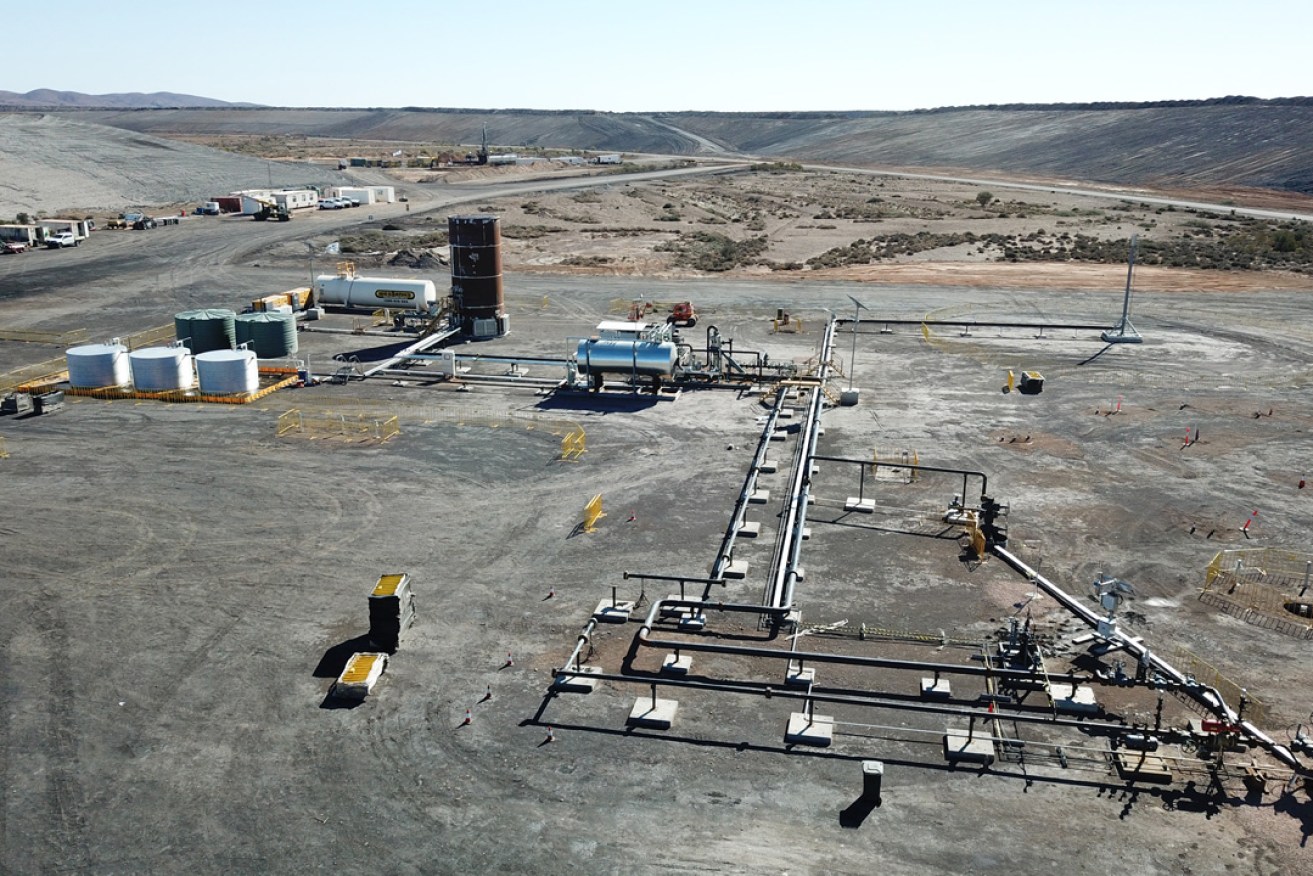Your views: On Leigh Creek energy, gyms and university troubles
Today, readers comment on the latest plan to create energy from the closed Leigh Creek coal mine, confusion over gyms reopening and the financial crisis enveloping Australian universities.

Leigh Creek Energy’s Pre-Commercial Demonstration (PCD) plant.
Commenting on the story: Leigh Creek Energy’s low-cost hydrogen pitch
The Leigh Creek Energy Project proposed for the Leigh Creek coalfield has attracted considerable opposition from local community, including traditional custodians, the Adnyamathanha peoples. The proposed site, the Leigh Creek coalfield, remains an important part of Adnyamathanha creation story and should be protected from further desecration.
After the devastating events in Western Australia by Rio Tinto, we do not want to see the same destruction caused to our ancestral lands. This same technology caused the worst environmental disaster in Queensland’s history including government departments being held liable for that damage. Despite the fact that Leigh Creek Energy struggled to produce syngas which required an extension for their Pre-Commercial Demonstration plant, they are forging ahead for this project to go to commercial production.
We cannot make the same mistakes that lead to this current climate crisis we are facing. This dirty and dangerous gas project will threaten country and culture. We will continue to fight and protect our country as we’ve done since time immemorial. – Dwayne Coulthard
The ‘hydrogen’ project flagged by Leigh Creek Energy (unlike ‘green’ hydrogen projects) involves underground coal gasification, using a process banned in Queensland. It would be very heavily greenhouse gas-intensive.
I’m surprised none of this was mentioned in your article.
Coincidentally, on Wednesday, a new moderate think-tank, the Blueprint Institute, backed by former Coalition ministers, Christopher Pyne and Julie Bishop, released the results of a community survey which found that 88% of Australians supported investment in renewables rather than fossil fuels.
It is in Australia’s interest to reduce emissions and harness the huge economic opportunities in embracing the transition to clean energy.
We are in a climate emergency. Projects which threaten the habitability of the Earth simply should not proceed. – Jim Allen
Commenting on the story: Gym members confused by fees as capacity limits enforced
Yep spot on you guys! I’m a Goodlife member too and confused as I only do classes and they’re not operating and, as a result, don’t understand if they’ll be trying to charge me even if I don’t set foot in their doors.
I, too, was up in arms at the first email in March from Goodlife advising of the freeze with a $5 weekly fee which was then retracted before I had time to write my complaint. This time I really have no idea what they plan to do.
It was a relief to see your article and learn that many other gym goers are equally confused/frustrated and uncertain of the cost. – Olga Kostic
Commenting on the story: Pandemic could cost Australian universities $16 billion
Universities, as public institutions entrusted with serving the public good, deliver high-quality research and education that serves us all. Research outputs deliver social, cultural, and economic benefits that vastly outstrip the dollars invested.
Education delivers opportunities, conceptual expansion, and career pathways for all. University staff, whether professional, academic, fixed-term, or casual, work above and beyond their pay packets and have seen workload intensification in the extreme during the pandemic as all activities have been transitioned online overnight and student care has been intensified.
The vast majority of teaching (whether online or face-to-face) is delivered by precariously employed sessional academic staff who are now facing job loss and no access to JobKeeper support. To say that university staff are enjoying the ‘gravy train’ (as one commentator noted), is to undervalue and diminish the enormous amounts of time and effort university staff put in – above and beyond their paid salaries – to deliver world-class education and research to the communities we serve.
Senior executives and vice-chancellors do need to take pay cuts during this crisis, but everyday working people in universities have never worked harder and longer to sustain their institutions and meet student demand.
Redundancies, stand-downs, and forced leave are now a reality in many universities, which will deplete the very institutions entrusted to drive our post-pandemic recovery efforts. It’s false economy to say that we should now underinvest in university staff, as we can’t stay world competitive and true to task if our workforces are diminished and/or worked to the bone.
There is a crisis in higher education and the pandemic is shining a light on it: unsustainable and unhealthy workloads at a time when staff are being asked to do more and more with less (and others are losing their jobs). Such an approach may very well crush and damage our world-class institutions forever. – Dr Andrew Miller
Want to comment?
Send us anemail, making it clear which story you’re commenting on and including your full name (required for publication) and phone number (only for verification purposes). Please put “Reader views” in the subject.
We’ll publish the best comments in a regular “Reader Views” post. Your comments can be brief, or we can accept up to 350 words, or thereabouts.




